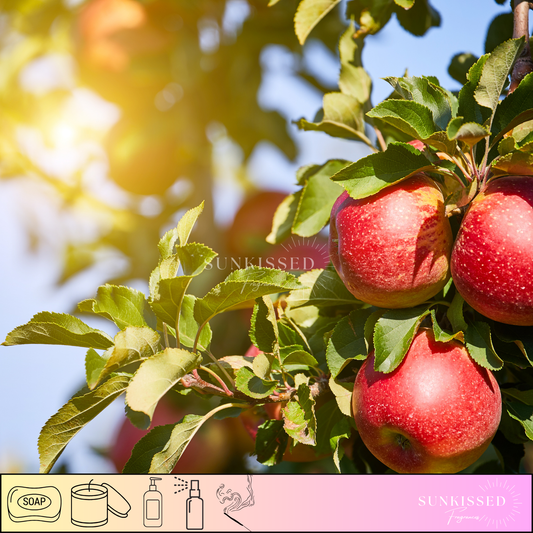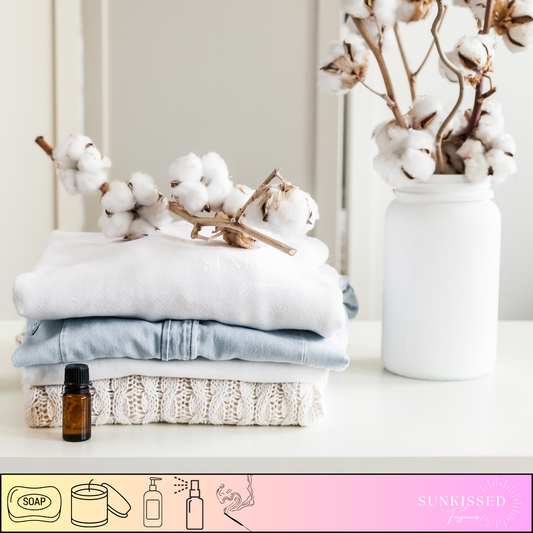
Candle Crafting to Commerce: Your Complete Guide to Launching a Successful Candle Business
Introduction
Candle making is a beautiful blend of creativity and entrepreneurship. Whether you’re crafting scents that evoke memories or designing candles that are visual masterpieces, the candle business offers a canvas for your creativity. However, like any business, it’s essential to approach it with a clear strategy and an understanding of the market dynamics. This guide will walk you through the detailed steps to establish and grow your candle business, from the basics to advanced strategies, including how to conduct market research effectively.
Section 1: Getting Started on a Budget
1. Research and Planning
How to Conduct Market Research:
-
Identify Your Niche: Start by narrowing down your focus. Are you interested in eco-friendly candles, luxury scents, or custom designs? Your niche will define your target audience and product offerings. Research online forums, social media groups, and candle-making blogs to find what enthusiasts are looking for.
-
Competitive Analysis: Look at other candle businesses, both local and online. Analyze their product offerings, pricing, marketing strategies, and customer reviews. Tools like SEMrush, Ahrefs, or Google Trends can help you understand search trends and keywords related to candles.
-
Survey Potential Customers: Create surveys using tools like SurveyMonkey or Google Forms. Ask questions about their candle preferences, price points, purchasing habits, and what they look for in candle products. Share your survey on social media and candle-related forums to gather insights.
-
Attend Industry Events: Participate in craft fairs, candle expos, and local markets. These events are excellent for networking, gaining feedback, and understanding what customers are buying. Look for events on Eventbrite or Meetup.com.
Placeholder Image Recommendation: An image of a candle-making market stall or a brainstorming session with market research charts.
2. Create a Business Plan
Developing Your Business Plan:
-
Executive Summary: Outline your business concept, mission statement, and objectives. This section should be concise but compelling, summarizing what your business is about and what you aim to achieve.
-
Market Analysis: Based on your research, detail your target market, industry trends, and competitive landscape. Include data on market size, growth projections, and customer demographics.
-
Product Line Description: Describe your candle products, including types (soy, beeswax, paraffin), scents, designs, and packaging. Highlight what makes your candles unique and why customers should choose them.
-
Marketing and Sales Strategy: Detail your marketing plan, including online presence, social media strategies, advertising, and sales channels. Discuss how you will attract and retain customers, whether through SEO, influencer partnerships, or local events.
-
Financial Plan: Include startup costs, projected revenue, and profit margins. Outline your funding requirements, pricing strategy, and break-even analysis. Use tools like QuickBooks or Excel for financial planning.
Placeholder Image Recommendation: An image of a detailed business plan document or a financial spreadsheet.
3. Legal Requirements
Setting Up Your Business Legally:
-
Register Your Business: Choose a business name that reflects your brand and check its availability with your state or local business registration office. Register your business name and file the necessary paperwork to obtain your business license.
-
Get Permits and Licenses: Check with your local government for required permits. You may need a sales tax permit, a home occupation permit, or health department permits, especially if you plan to sell at markets or online. [Insert Link for Legal Services]
-
Insurance: Consider business insurance to protect against liability and property damage. Options include general liability insurance, product liability insurance, and business property insurance. [Insert Link for Insurance Providers]
Placeholder Image Recommendation: An image of legal documents, permits, or a small business office setup.
4. Equipment and Supplies
Essential Equipment and Supplies for Beginners:
-
Basic Equipment:
- Wax Melting Pot: For melting wax. A double boiler or a dedicated melting pot works well.
- Thermometer: To monitor wax temperature. A digital or candy thermometer is ideal.
- Candle Molds or Containers: Choose from glass jars, metal tins, or silicone molds. Start with a few basic shapes to experiment with.
- Fragrance Oils and Dyes: Select high-quality, skin-safe fragrance oils and candle dyes. Start with a few popular scents like lavender, vanilla, or eucalyptus.
- Wick Trimmers and Holders: Essential for trimming wicks and ensuring they stay centered during the cooling process.
-
Where to Buy Supplies: Look for reputable suppliers like [Insert Link to Candle Supply Store] or local craft stores. Buying in bulk can save costs in the long run.
Cost Breakdown (Budget):
- Equipment and Supplies: Approximately $200 - $500
- Legal and Licensing: Varies by location, estimate $100 - $300
- Initial Inventory: Depends on scale, estimate $200 - $500
Placeholder Image Recommendation: A neatly arranged setup of basic candle-making equipment.
5. Crafting Your Candles
Developing Your Candle Line:
-
Experiment with Wax Types: Soy wax is popular for its clean burn, while beeswax is known for its natural scent. Paraffin wax is widely used for its smooth texture and easy handling. Experiment with different waxes to find your favorite.
-
Test Scents and Colors: Start with a small batch to test your fragrances and colors. Use a fragrance calculator to determine the correct amount of oil for each candle. Keep notes on the scent throw, burn time, and appearance.
-
Perfect Your Technique: Pay attention to pouring temperatures and cooling times. Experiment with different wick sizes and placements to avoid tunneling or uneven burning. You may need to make several batches before achieving consistency.
Placeholder Image Recommendation: An image of a candle-making workshop with various waxes, scents, and molds.
6. Branding and Packaging
Building Your Brand Identity:
-
Create a Logo and Brand Elements: Use tools like Canva or hire a graphic designer to create a logo that reflects your brand’s personality. Ensure your logo is versatile for use on labels, websites, and social media.
-
Design Attractive Packaging: Your packaging should be functional and visually appealing. Consider eco-friendly materials to attract environmentally conscious customers. Use design software like Adobe Illustrator or hire a professional designer for custom packaging.
-
Develop a Brand Story: Craft a compelling story behind your brand. Share your passion for candle making, the inspiration behind your scents, and your commitment to quality and sustainability. Use this story across your marketing channels to build a connection with your customers.
Cost Breakdown (Budget):
- Branding and Packaging Design: Approximately $100 - $300
- Initial Packaging Supplies: $50 - $150
Placeholder Image Recommendation: A collection of beautifully packaged candles with branding elements.
Section 2: Scaling Up Your Operations
1. Building Your Online Presence
Creating a Professional Online Store:
-
Choose an E-commerce Platform: Platforms like Shopify, BigCommerce, or Etsy are popular choices for selling candles online. Evaluate their features, costs, and integrations with shipping and payment gateways.
-
Design Your Website: Use a clean, user-friendly design. Ensure your site is mobile-responsive and easy to navigate. High-quality product images and detailed descriptions are crucial for online sales. Consider hiring a professional web designer if needed.
-
Optimize for SEO: Use relevant keywords, meta descriptions, and alt text for images to improve your search engine ranking. Tools like Yoast SEO or Moz can help you optimize your site’s SEO.
Placeholder Image Recommendation: Screenshot of a well-designed e-commerce website homepage.
2. Marketing and Sales Strategies
Implementing Effective Marketing Tactics:
-
Leverage Social Media: Create profiles on Instagram, Pinterest, and Facebook. Post high-quality images, behind-the-scenes content, and user-generated content. Use Instagram Stories and Facebook Ads to reach a broader audience.
-
Influencer Partnerships: Collaborate with influencers or bloggers in the home decor and wellness niches. Offer them free products in exchange for reviews and features on their platforms. Platforms like AspireIQ or Upfluence can help you find and manage influencers.
-
Email Marketing: Build an email list using tools like Mailchimp or ConvertKit. Send regular newsletters with product updates, special offers, and candle-making tips. Personalize your emails to enhance customer engagement.
-
Attend Events and Markets: Look for local craft fairs, pop-up shops, and markets to showcase your candles. These events provide direct customer feedback and increase brand visibility. Use Eventbrite or Facebook Events to find opportunities.
Cost Breakdown (Mid-range):
- Website Development: $500 - $1,500
- Marketing and Advertising: $200 - $1,000 per month
- Inventory and Equipment Upgrades: $1,000 - $3,000
Placeholder Image Recommendation: A collage of social media posts, influencer collaborations, and market stalls.
3. Investing in Growth
Enhancing Your Production and Operations:
-
Automate Processes: Invest in automation tools or machinery to increase production efficiency. Machines like wick setters, wax melters, and labeling machines can streamline your workflow. Research suppliers like [Insert Link to Candle Equipment Supplier].
-
Upgrade Your Software: Use software like QuickBooks for accounting, TradeGecko for inventory management, and Klaviyo for advanced email marketing. These tools can save time and reduce errors in your business operations.
-
Expand Your Product Line: Research new product trends and customer preferences. Consider adding complementary items such as bath bombs, diffusers, or seasonal collections. Conduct A/B testing on new products to gauge customer interest before a full launch.
Cost Breakdown (High-end):
- Automation Equipment: $5,000 - $10,000+
- **Software and IT Infrastructure:** $2,000 - $5,000
- New Product Development: $1,000 - $5,000
Placeholder Image Recommendation: An image of an automated candle production line or a collage showing integrated software solutions.
Section 3: Investing in Your Candle Empire
1. Automating Processes
Streamlining Production with Automation:
-
Invest in Production Equipment: Consider automated wax melters, pouring machines, and labeling systems to increase output while maintaining quality. These investments reduce labor costs and improve consistency in your candle production.
-
Implement Quality Control Measures: Use technology like temperature sensors and quality inspection software to monitor production standards. Conduct regular checks to ensure your candles meet safety regulations and customer expectations.
Placeholder Image Recommendation: A high-tech candle production facility with automated equipment in operation.
2. Expanding Your Product Line
Diversifying Your Offerings:
-
Research New Trends: Stay updated on industry trends and consumer preferences. Consider expanding into related products like home fragrances, essential oils, or wellness candles. Test new products through limited releases or surveys to gauge customer interest.
-
Collaborate with Suppliers: Partner with reliable suppliers for raw materials and packaging. Negotiate bulk discounts to lower costs and maintain consistent product quality. Use suppliers that align with your brand’s values, such as eco-friendly or ethically sourced materials.
Placeholder Image Recommendation: A lineup of candles and related products in various scents and designs.
3. Establishing Long-term Sustainability
Committing to Sustainability Practices:
-
Use Eco-friendly Materials: Source sustainable waxes, natural fragrances, and recyclable packaging materials. Highlight your commitment to sustainability in your marketing campaigns and product labeling.
-
Reduce Carbon Footprint: Optimize shipping routes and packaging to minimize environmental impact. Consider carbon offset programs or eco-friendly shipping options for online orders.
-
Support Ethical Sourcing: Partner with suppliers who adhere to fair trade practices and ethical labor standards. Build transparent relationships with stakeholders to ensure ethical sourcing across your supply chain.
Placeholder Image Recommendation: An eco-friendly packaging setup or a sustainable sourcing infographic.
Conclusion
Starting and growing a candle business requires dedication, creativity, and strategic planning. From conducting thorough market research to scaling your operations with automation and expanding your product line, each step plays a crucial role in your entrepreneurial journey. Embrace challenges as opportunities to learn and innovate, and stay true to your brand’s values and customer needs.
Placeholder for Affiliate Links: Insert affiliate links for professional business services and software throughout the guide, where appropriate.
Disclaimer: Entrepreneurship involves risks, and success is not guaranteed. It's essential to adapt to market changes, seek professional advice when needed, and stay committed to continuous improvement.
- Affiliate Disclaimer: This blog post may contain affiliate links. If you click on these links and make a purchase, SFK may earn a commission at no additional cost to you. SFK only recommend products and services that we have personally used or thoroughly researched.

























